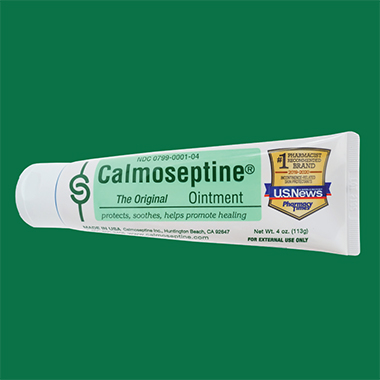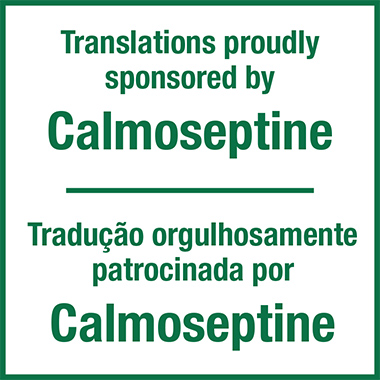Volume 43 Number 4
WCET®: Global connectedness – common issues and proposed solutions
Jenny Prentice
For referencing Prentice J. WCET®: Global connectedness – common issues and proposed solutions. WCET® Journal 2023;43(4):7.
DOI 10.33235/wcet.43.4.7
Another year is concluding. Another year in which the goals and global outreach of the WCET® have touched many in need and inspired others to investigate, advocate or share solutions to common problems associated with the provision of ostomy, wound or continence care.
The WCET® epitomises connectedness on a global scale as evidenced by past, current and proposed future activities and reciprocal relationships with many individuals and organisations aligned with the specialties of ostomy, wound and continence care.
The connectedness of “being or feeling socially, emotionally, spiritually or professionally linked with others or with another”. It is the “robustness of such relationships” and shared experiences that assists with building “trust and reciprocity” which provides the foundation for “collective action”1.
The President and President Elect’s message highlight this with many examples, particularly that of assistance provided to a person with an ostomy moving to Thailand and the need to know from where they obtain their ostomy supplies. Similarly, the results of the Membership Survey show the many services that WCET® provide – one example being to ensure we all remain connected and can maintain currency of practice through education.
Collective action is demonstrated through collegial interactions with numerous like-minded professional organisations, such as the European Pressure Ulcer Advisory Panel and International Skin Tear Advisory Panel. Further, collaboration with The Association of Stoma Care Nurses (ASCN), United Kingdom in hosting the WCET® ASCN UK Joint Congress in 2024 will enhance that global connectedness through the sharing of clinical, research and educational expertise.
Articles within this issue of the journal all identify common problems experienced by clinicians or patients worldwide. The use of a simple device to prevent kinking within percutaneous tubes combined with staff education and a refined protocol of care for managing the percutaneous tube that reduced the incidence of tube kinking and replacement is described by Maniya et al.
The lived experience of patients in hospital who were unnecessarily provided with continence aides, as an alternative to assistive toileting, and the resultant effect on their physical, mental and social well-being is discussed by Gamboa and Garzón. The management of parastomal ulceration is a frequent and often challenging chronic complication of ostomy surgery.
There has long been an awareness that immunosuppressant therapy has the potential to delay wound healing and thus increase the risk of wound infection. Administration of immunosuppressants modulates the immune system. Different classes of immunosuppressants such as Calcineurin Inhibitors, Glucocorticoids, Monoclonal Antibodies, mTOR Inhibitors, have different actions and effects on wound healing. Appoo et al conclude further research is required to clearly identify those agents that pose the highest risk to wound healing.
As the year ends there is much positivity to reflect on, especially the achievements of the WCET® which have been acknowledged by their peers with the bestowing of several wards in recognition of work undertaken. I wish to thank all those authors, reviewers, Editorial Board members and our publishing team who have collectively contributed to the ongoing success of the WCET® Journal through the year.
Equanimity, unfortunately however, is not always universal. Our thoughts are with those around the world who are less fortunate.
John Lennon left us with a legacy of intergenerational and social connection through his many songs; one of which was ‘Imagine’ within which he says, “You may say I’m a dreamer but I’m not the only one. I hope someday you’ll join us. And the world will be as one” (John Lennon, Imagine:1971)2.
Wishing you all connectedness through peace and goodwill.
Best wishes to you all, Jenny.
WCET®: Conexão global - questões comuns e soluções propostas
Jenny Prentice
DOI: 10.33235/wcet.43.4.7
Mais um ano está a terminar. Mais um ano em que os objetivos e o alcance global da WCET® tocaram muitas pessoas necessitadas e inspiraram outros a investigar, defender ou partilhar soluções para problemas comuns associados à prestação de cuidados de ostomia, feridas ou continência.
A WCET® é o epítome da ligação a uma escala global, tal como evidenciado pelas atividades passadas, atuais e propostas para o futuro e pelas relações recíprocas com muitos indivíduos e organizações alinhadas com as especialidades dos cuidados de ostomia, feridas e continência.
A conexão de "estar ou sentir-se social, emocional, espiritual ou profissionalmente ligado a outros ou a um outro". É a "solidez dessas relações" e as experiências partilhadas que ajudam a criar "confiança e reciprocidade" e que constituem a base da "ação coletiva "1.
A mensagem do Presidente e do Presidente eleito salientam este facto com muitos exemplos, nomeadamente o da assistência prestada a uma pessoa com ostomia que se desloca à Tailândia e a necessidade de saber onde obtém os seus artigos de ostomia. Da mesma forma, os resultados do Inquérito aos Membros mostram os muitos serviços que a WCET® fornece - um exemplo é o de assegurar que todos nós permanecemos ligados e podemos manter a atualidade da prática através da educação.
A ação coletiva é demonstrada através de interações colegiais com numerosas organizações profissionais com os mesmos objetivos, como o Painel Consultivo Europeu sobre Úlceras de Pressão e o Painel Consultivo Internacional sobre Lesões Cutâneas Laceradas. Além disso, a colaboração com a The Association of Stoma Care Nurses (ASCN), Reino Unido, para acolher o Congresso Conjunto da WCET® e ASCN UK em 2024, reforçará essa ligação global através da partilha de conhecimentos clínicos, de investigação e educacionais.
Todos os artigos desta edição da revista identificam problemas comuns vividos por clínicos ou pacientes em todo o mundo. Maniya et al. descrevem a utilização de um dispositivo simples para evitar a formação de dobras nos tubos percutâneos, que combinada com a formação do pessoal e um protocolo de cuidados aperfeiçoado para a gestão do tubo percutâneo, reduziu a incidência de dobras e de substituição do tubo.
A experiência vivida por pacientes hospitalizados a quem foram desnecessariamente fornecidos auxiliares de continência, como alternativa ao uso de sanita assistida e o efeito resultante no seu bem-estar físico, mental e social é discutida por Gamboa e Garzón. O tratamento da ulceração paraestomal é uma complicação da cirurgia de ostomia crónica, frequente e muitas vezes difícil.
Há muito que se sabe que a terapêutica imunossupressora tem o potencial de atrasar a cicatrização das feridas, aumentando assim o risco de infeção das mesmas. A administração de imunossupressores modula o sistema imunitário. Diferentes classes de imunossupressores, tais como os inibidores da calcineurina, os glucocorticóides, os anticorpos monoclonais e os inibidores da mTOR, têm diferentes ações e efeitos na cicatrização de feridas. Appoo et al concluem que é necessária mais investigação para identificar claramente os agentes que representam um maior risco para a cicatrização de feridas.
No final do ano, há muito de positivo para refletir, especialmente as realizações da WCET® que foram reconhecidas pelos seus pares através da atribuição de vários prémios em reconhecimento do trabalho realizado. Gostaria de agradecer a todos os autores, revisores, membros do Conselho Editorial e à nossa equipa de publicação que contribuíram coletivamente para o sucesso contínuo da Revista WCET® ao longo do ano.
Infelizmente a equanimidade nem sempre é universal. Os nossos pensamentos estão com aqueles que, em todo o mundo, são menos afortunados.
John Lennon deixou-nos um legado de ligação intergeracional e social através das suas muitas canções; uma delas foi "Imagine", na qual ele diz: "Podem dizer que sou um sonhador, mas não sou o único. Espero que um dia se junte a nós. E o mundo será como um só" (John Lennon, Imagine:1971)2.
Desejo-vos a todos uma ligação através da paz e da boa vontade.
Os melhores votos para todos vós, Jenny.
Author(s)
Jenny Prentice
PhD BN RN STN FAWMA
References
- https://www.dictionary.com/browse/connectedness
- John Lennon. Imagine: 1971.



